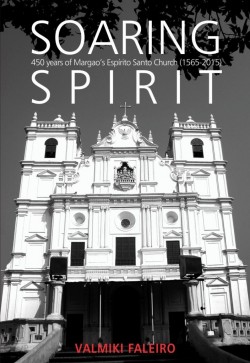
This work spans over 81,000 words and over 483,000 characters. it has 304 pages and over six dozen photographs. Many of which are compiled for the first time, and a few of which are so old that most of us might have even forgotten that these existed.
Three aspects of Valmiki Faleiro’s work would perhaps strike any reader who comes across it, as it did to me.
Firstly, Valmiki is a story-teller par excellence. He goes into full flow when he sees an interesting story. This is true of the man in real life, as it is obvious from his writing. Those of us who remember the coverage he gave Margao — and Salcete — in his West Coast Times days, back in the late 1970s and early 1980s, will vouch that the man has not lost his touch.
Secondly, Valmiki’s aim is not to merely come out with a brochure, or a souvenir. This is not a piece of writing that says goody-goody things about ourselves. His is a story which tells it warts and all. But, this is what makes his narration more interest.
Thirdly, the author of the current work has gone out of his way to put together the best possible compilation of facts, figures and photographs possible. He has done so within this short time. It is almost unbelievable that a work of this nature could have been completed within three months.
Somewhere in the book, the author narrates how he got the idea and decided to take up the challenge. A quick glance through the pages will give an insight into how much energy the author and the contributing photographers (particularly Pantaleao Fernandes) expended to build up a coherent visual story.
This text only reminds us that institutions are made of the sweat, toil, tears, dedication, smiles and contribution of so many individuals.
Jacome Lourenço is the earliest known priest from Margao, we learn in a section listing diocesan priests ordained before 1758. We encounter the histories of the houses of the Largo da Igreja (that is, the Church Square) and the families that inhabited them. Manddes, cladding tiles, markets, chapels and jails go into the crafting of this comprehensive story of this character-laden part of town.
But, beyond that, it was the the way this book explains the many interconnections. Between church and locality. History and geography. Jesuits and Sashtikars. Christians and Hindus and their pre-Hindu counterparts. And much more.
From Goastreets on Facebook.
Audio recording of the book release.
Excerpt via Goanet.


